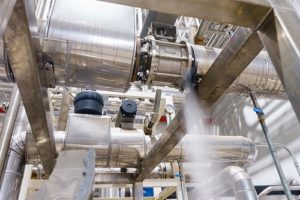Hydrogen sulfide gas can be dangerous to those who are exposed to it. This type of gas contains a stinky smell, which is usually the way that it is detected. However, when working in an industrial facility or research lab, this might be the last thing on your mind. An H2S gas sensor will detect any existence of hydrogen sulfide gas and ensure that everyone is aware of the danger. This detection is especially important as it can spread rapidly, potentially putting more people in danger. Here are some surprising facts about H2S gas sensors that you should know.

They Feature Multiple Alarm Systems
Depending on where you’re working, it may be difficult to hear or see a detection system alerting you of a gas leak. That’s why H2S gas sensors feature various alarm systems, ensuring that you’ll immediately be aware of the problem. When the sensors detect hydrogen sulfide gas, multiple alerts will be sent out in the form of strobes, sirens, and flashing lights. Whether you’re in an area of the facility that is full of loud noises or lots of light, you’ll be aware of the potential danger.
Real-Time Data Transmission
When a hydrogen sulfide gas leak occurs, it can spread very quickly. For this reason, it’s important to be aware of the situation and take the necessary steps to keep everyone safe. In addition to featuring various alerts, H2S gas sensors have the capability of gathering data about the leak and sending it to the right people in real-time. This could be those that are inside the facility or in nearby monitoring stations. Engineers, technicians, and management personnel that may need to be aware of the problem will be able to access this real-time information on their smartphones or tablets. This will allow them to keep up with developments no matter where they are.
Remote Calibration
In order for an H2S gas sensor to provide accurate and reliable data, it must be calibrated correctly. It may seem as though you would need to be on-site in order to calibrate these sensors, but that’s not the case anymore. Modern sensors are equipped with electronic systems that allow the sensors to be calibrated from remote monitoring stations. If a system needs to be calibrated, it can be done without anyone disrupting the workflow. This will also allow for quicker calibration so that all sensors are working properly at all times should a leak occur.
Portable Hydrogen Sulfide Detectors

H2S gas sensors are most commonly located on a wall within a facility so that it can detect the existence of hydrogen sulfide gas. However, that’s not the only detection system. Workers can now have their very own portable hydrogen sulfide gas detection system. These personal detectors can easily clip onto a belt or another piece of clothing. This is especially helpful when someone is working in a confined space where recognizing the gas quickly is even more important. Just like the larger sensors, these portable devices can detect the gas and send real-time data to monitoring personnel, keeping everyone safe.
Hydrogen sulfide gas can be very dangerous, making an H2S gas sensor an essential instrument. These are some of the aspects of a modern H2S gas sensor that allows for a safer workspace when this gas is in existence. Contact DOD Technologies if you’re in need of an H2S gas detector.






